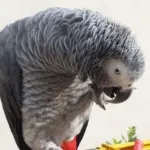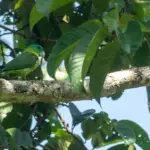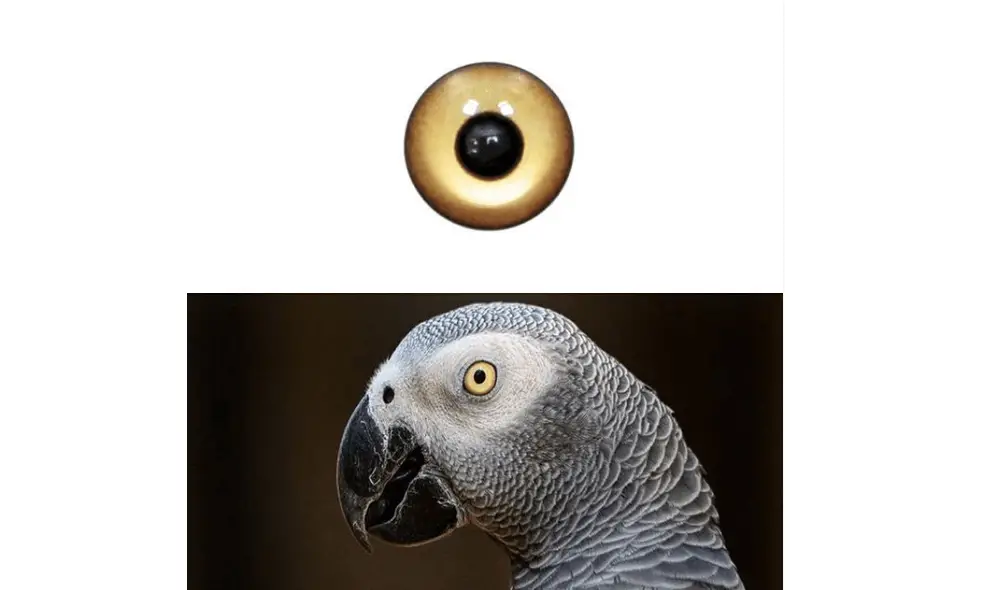Lucien the clumsy African gray
Lucien has always been a nervous and clumsy parrot. He hates being touched and he is the champion of unusual stunts. How many times has it ended up in the wastebasket?
In his effort to get out of this rather awkward situation, he hooks his beak to the edge of the light wicker basket and tilts it to the side. Here he is again the victim of an embarrassing situation that further injures his ticklish self-esteem.
Louise can no longer count the times she has rescued him from these precarious situations. Lucien does not tame himself, he begins, again and again, his perilous flights. About ten days ago, he stumbled upon the cactus for the first time. Fortunately, he did not hurt himself. Louise did not notice a drop of blood.
Lately, Lucien’s eye has changed in appearance. A white dot appeared in its center. The bird is brought to the vet. The ophthalmologic examination revealed the presence of a very small penetrating wound on the level of the cornea. The pointed object (thorn of the cactus), in addition to having pierced the cornea, crossed the anterior ocular chamber to finally go to injure the crystalline lens of the parrot. The consequence of this injury: corneal ulcer, uveitis (infection of the anterior chamber of the eye), and tear of the lens capsule with the secondary formation of a cataract.
African Grey Eyes
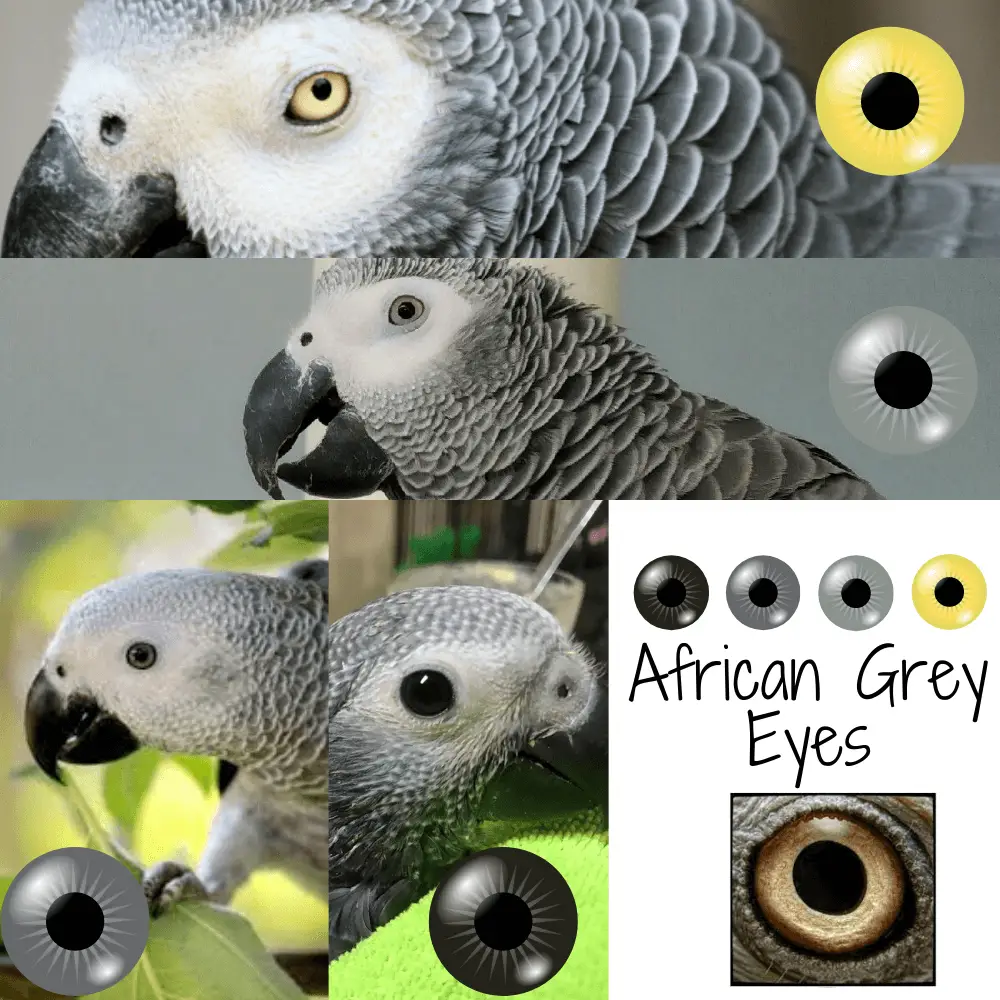
Louise the African Grey Parrot would never have believed that a small cactus thorn could do so much damage, especially since no eye damage was visible to the naked eye. She had noticed though that her bird tended to hold its eye a little more closed and that its rim was a little wetter than usual, but these minor symptoms had not alarmed her. The bird’s eye was successfully treated for ulcer and uveitis but the cataract remained. Lucien is therefore blind in his right eye but his vision is excellent on the left. By losing vision in one eye, however, it loses its ability to see well in three dimensions. It is therefore no longer able to properly assess the depths and reliefs.
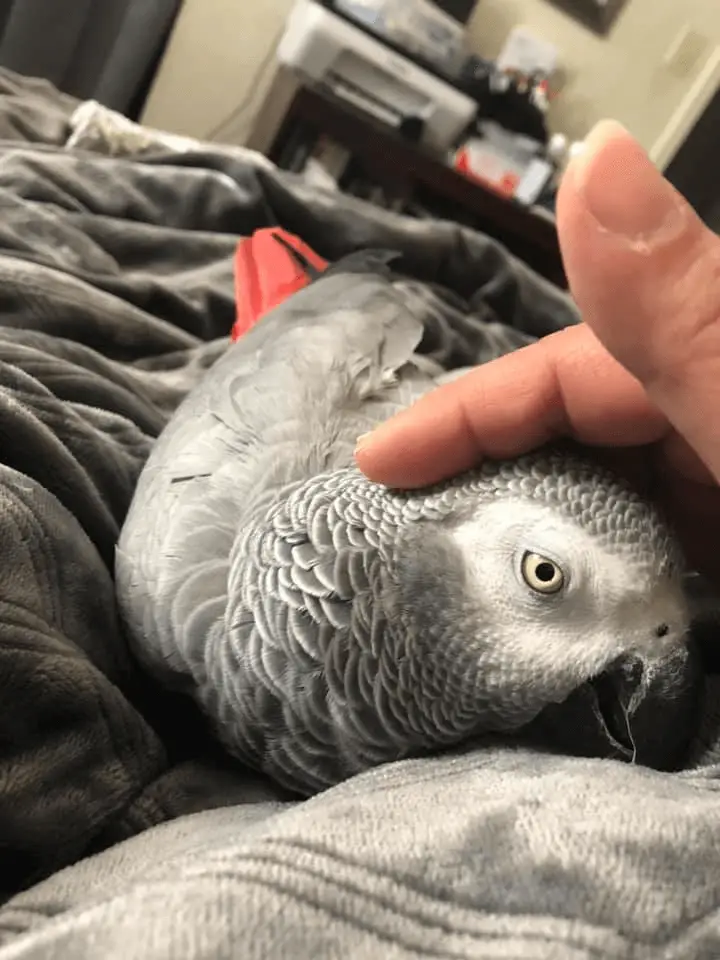
Grandpa, the geriatric Amazon
Pépé has been living with humans for at least twenty-five years, minimum! He was forced to agree to live in captivity in 1951 when a gang of children kidnapped him from his nest. A traveler at the time (Sébastien’s grandfather) bought it from these children. He had been taken with pity for this little bird carried around with little delicacy and doomed to certain death. Very quickly, Pépé befriended his rescuer and the two friends returned to live in Montreal. When his grandfather died, Sébastien got Pépé back. He had made her a solemn promise to take good care of it when he left. At 53 years old, Pepe is a happy and healthy senior bird. However, at his last annual physical exam, Sébastien mentioned to his vet that he had seen a white spot appear in the center of his bird’s two eyes. Pepe did not show any signs of discomfort. Veterinarian’s diagnosis: cataracts. Sébastien learns with great amazement that Pépé’s vision is almost nil.
He can only make out the shadows. He is therefore considered blind. The surprise is all the greater because Pepe never let any one suppose that he was blind. Sebastien had noticed that he was becoming more calm and careful in his movements, but he had linked this change in behavior to the fact that the bird was getting older and wiser. Sébastien learns with great amazement that Pépé’s vision is almost nil. He can only make out the shadows. He is therefore considered blind. The surprise is all the greater because Pepe never let any one suppose that he was blind. Sebastien had noticed that he was becoming more calm and careful in his movements, but he had linked this change in behavior to the fact that the bird was getting older and wiser. Sébastien learns with great amazement that Pépé’s vision is almost nil. He can only make out the shadows. He is therefore considered blind. The surprise is all the greater because Pepe never let any one suppose that he was blind. Sebastien had noticed that he was becoming more calm and careful in his movements, but he had linked this change in behavior to the fact that the bird was getting older and wiser.
Charlie, the young macaw
A hand-fed baby, Charlie is a very endearing bird. He is very healthy and very playful. Lately, Sophie has noticed that he is being careful in his movements. This morning, he even lost his footing trying to switch from one line to the other. Yet he had never had any difficulty having fun in his play corner. Charlie is therefore taken to the vet. Close examination of his eyes indicates that Charlie’s crystals are starting to cloud over. Cataracts are forming, they will eventually completely obscure his vision. He will then be blind.
Cataract
Cataracts are the total or partial opacity of the lens that is located just behind the iris. The lens of the eye is a transparent lens with no blood vessels, and its role is to direct light rays that enter the eye to photoreceptor cells in the retina. A grayish spot that forms in the center of the eye and that gradually intensifies is characteristic of cataracts. First, the sight becomes cloudy, then eventually, there is a loss of vision. Cataracts affect one or both eyes.
It is either: the complication of a previous eye infection, a complication of diabetes, the consequence of an injury to the eye, the consequence of a genetic defect, the result of heredity, the result of a process of normal aging, the result of chronic or exaggerated exposure to ultraviolet rays from the sun, the consequence of nutritional deficiencies (example: in poultry, young people develop cataracts when their mother has been seriously deprived of vitamin E), the complication of exposure to certain toxic agents.
The onset of a cataract occurs more or less quickly depending on what caused it. In general, the process is gradual and the animal, therefore, has time to get used to its new reality of being blind. Euthanasia is not recommended at all for a blind bird. The degree of vision loss varies depending on where the cataract forms in the eye and how big it is. A cataract is much more disturbing when it appears in the center of the lens compared to its periphery. It can be very small, even almost imperceptible, or cover the entire extent of the lens.
Roughly, we can classify cataracts according to:
Age of onset:
- Congenital cataract. It is present at birth and can be the result of an embryonic malformation, the consequence of the taking of a drug or a toxic substance by the mother, or quite simply be hereditary. Some bird families pass the problem down from generation to generation.
- Juvenile cataract: It occurs at a young age.
- Senile cataract: it appears in old age and is associated with the normal aging process. It is by far the most common cause of cataracts in old birds.
Anatomical location in the lens:
- Depending on where the cataract is located in the lens, it can change its name (examples: anterior or posterior capsular if it forms either on the anterior or posterior lens capsule, cortical or nuclear depending on its position inside the lens.
Primary or secondary:
- A cataract can be primary, meaning that it is not a complication of another problem (example: caused by old age) or secondary (example: a complication of diabetes).
Degree of maturity:
- A cataract can be very young and not yet opaque (tasteless cataract), be mature if it involves the whole lens and is completely opaque. The animal is then blind. Cataracts can also become hyper mature by getting rid of their cloudy contents on their own. The vision is functional again despite a slight lack of sharpness caused by the wrinkled capsule of the empty lens.
Although a blind bird can live happily, it is advisable to consider giving it back to sight if its physical condition allows it. Cataract surgery is performed in birds with the same technologies available in humans. A veterinarian specializing in ophthalmology can easily remove an annoying cataract from a bird. However, not all birds are good candidates for this procedure. Each case must be assessed separately.
First of all, we favor completely blind individuals. Surgery can be done on one or both eyes. Sometimes economic considerations only allow one eye surgery. This is quite acceptable because the vision is still recovered. The ideal patient for this surgery is easily handled and is at no time stressed by the administration of drugs, which will be numerous after the surgery. He must also be cooperative because several ophthalmological examinations will be necessary during the convalescence. Finally, excellent physical health is required. For example, it would not be recommended to operate on a diabetic bird. Any initial infection should also be well healed before proceeding.
Let us take again here the case of our three birds of the beginning
Lucien with his unilateral, mature cataract secondary to trauma is not an ideal candidate for surgery. He is very nervous, does not like to be manipulated, and panics easily when someone tries to give him medicine. Although his uveitis has healed well and he is in good general health, it is best to leave him that way. His vision is still good because of his other eye.
Old Pepe, for his part, has bilateral, primary, and senile cataracts. He is completely blind. His health check is excellent (physical, ophthalmological, and blood exams) and he can be easily manipulated. Surgery on just one of his eyes would be enough to give him good vision, but Sebastien prefers both to be operated on.
Charlie is struggling with juvenile, bilateral, primary, and tasteless cataracts. Charlie is young and in excellent health. Her owner plans to have the surgery done, but her budget only allows her to have one eye operated on. As Charlie can still see fairly well due to his not yet mature cataracts, the procedure will be done a little later. This will give his mistress the opportunity to collect the necessary money.

